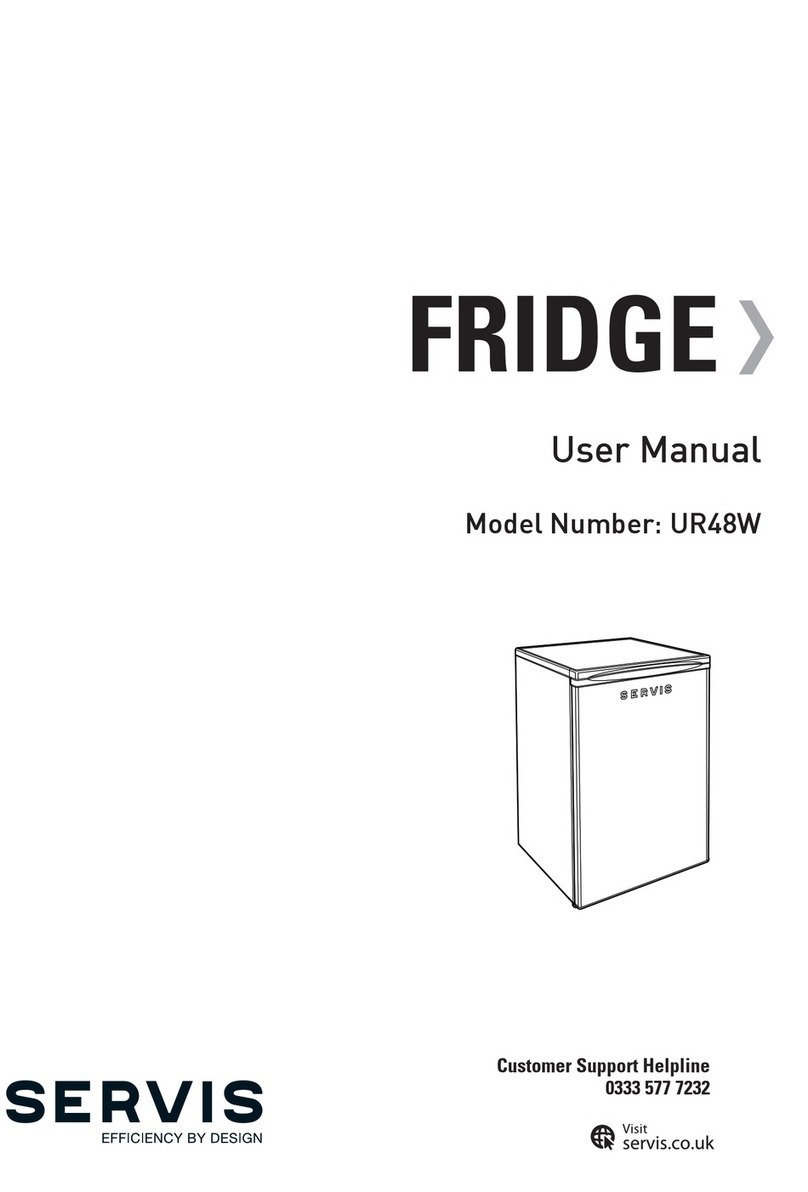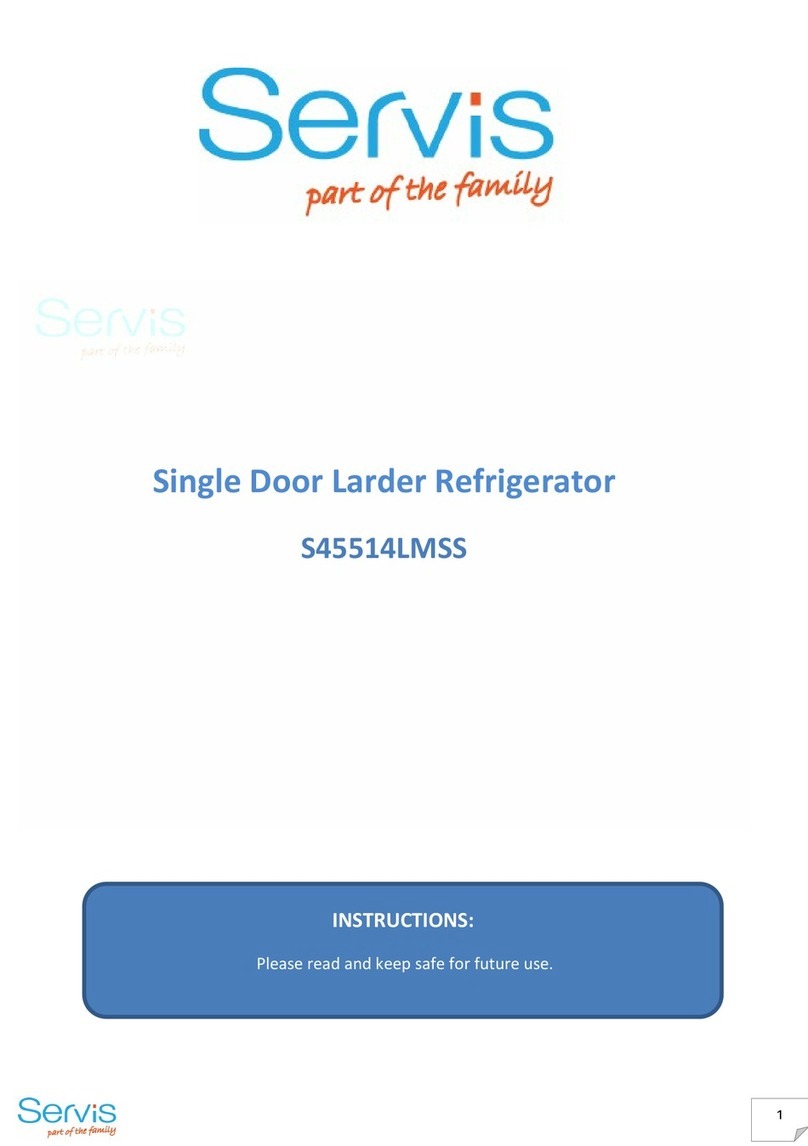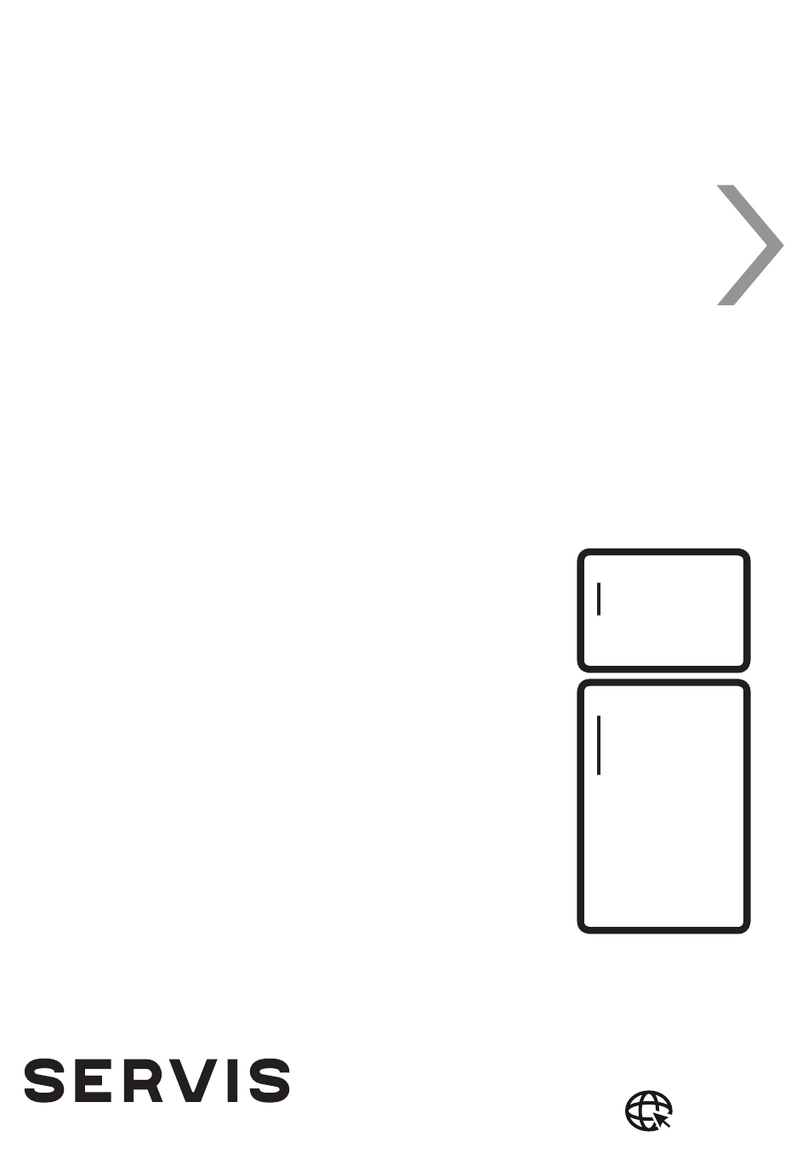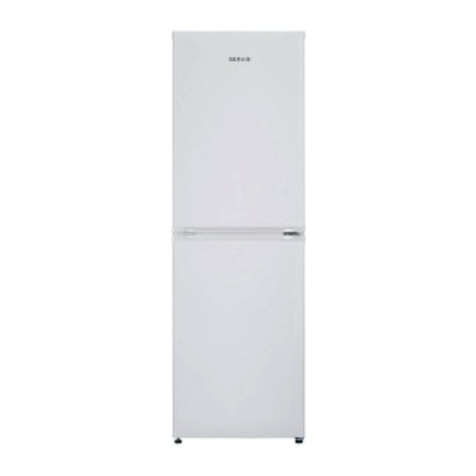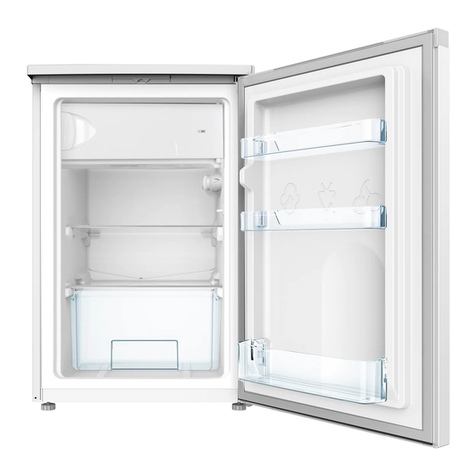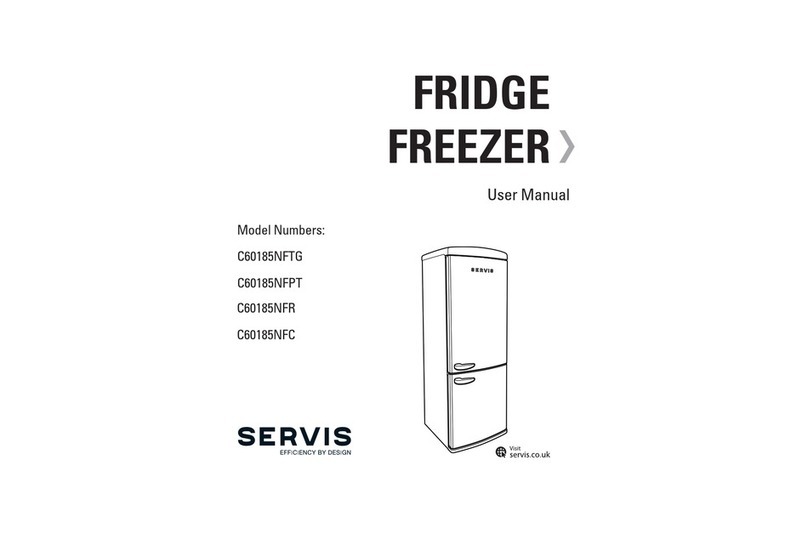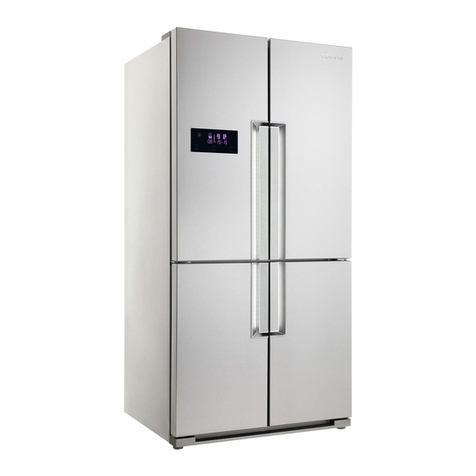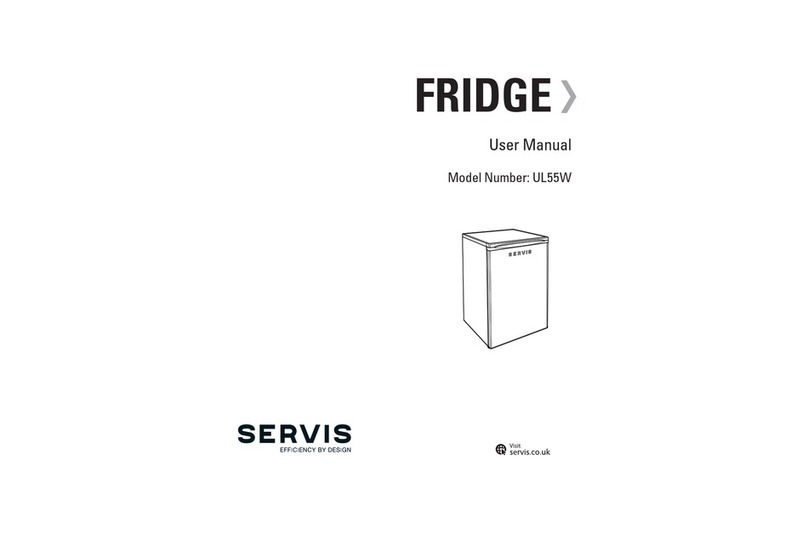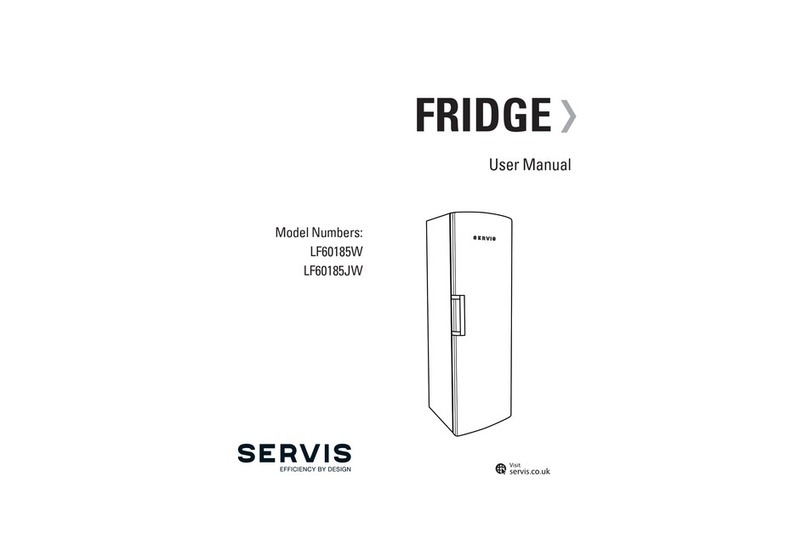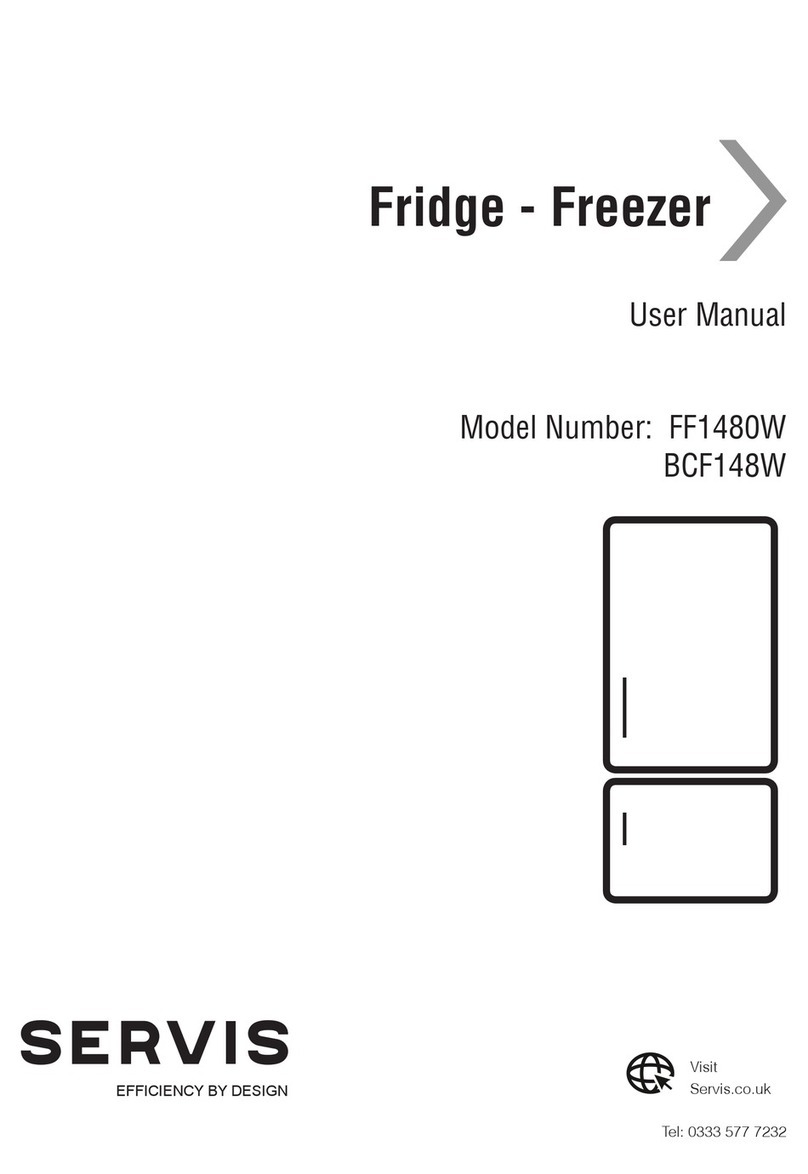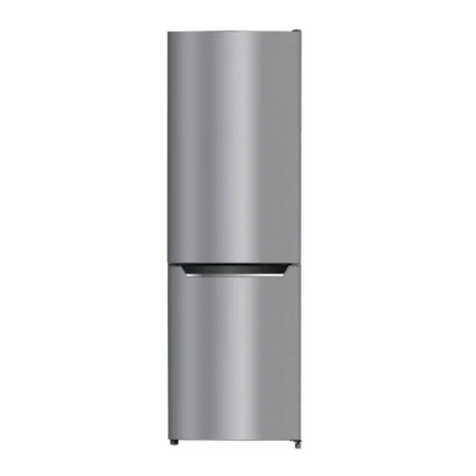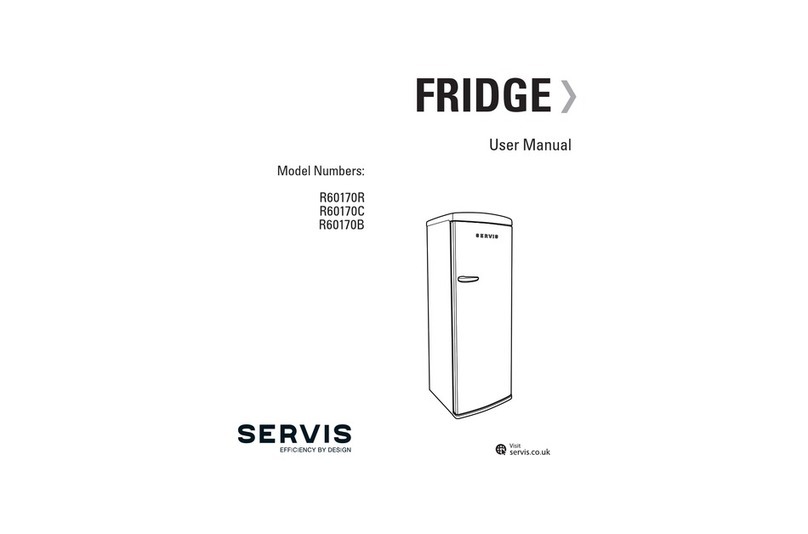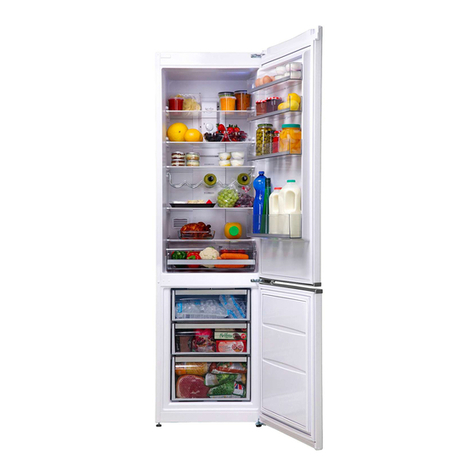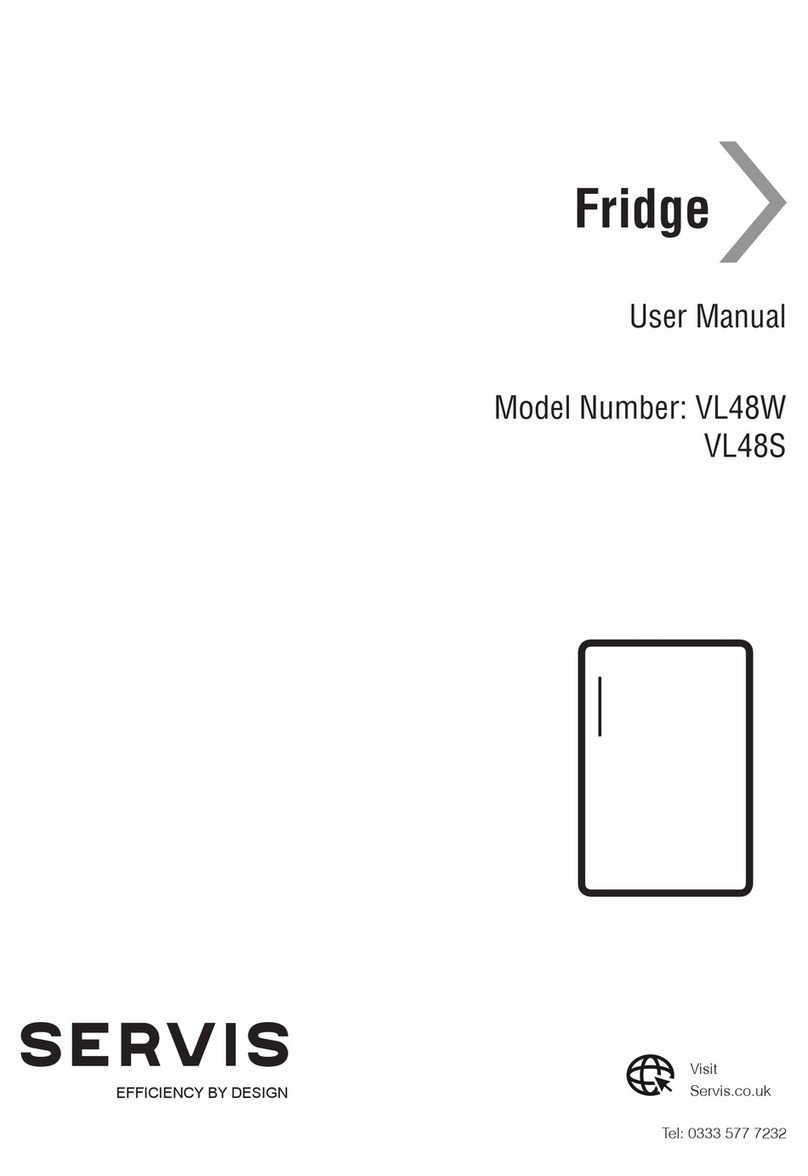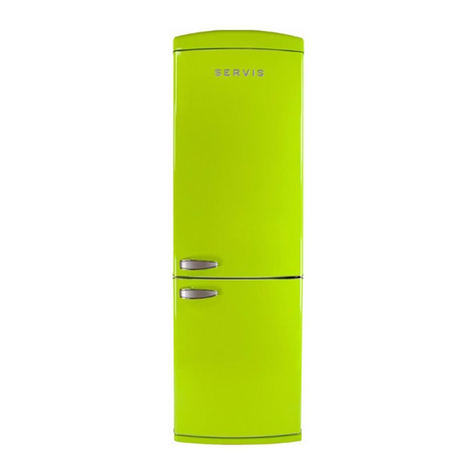
EN - 8 -
PART 3. ARRANGING FOOD IN THE APPLIANCE
Refrigerator Compartment
• To reduce humidity and consequent increase of frost never place liquids in unsealed
containers in the refrigerator. Frost tends to concentrate in the coldest parts of the
evaporator and in time will require more frequent defrosting.
• Never place warm food in the refrigerator. Warm food should be allowed to cool at
room temperature and should be arranged to ensure adequate air circulation in the
refrigerator compartment.
• Nothing should touch the refrigerator back wall as it will cause frost and the packages
can stick here. Do not open the refrigerator door too frequently.
• Arrange the meat and cleaned fish (wrapped in packages or sheets of plastic) which
you will use in 1-2 days.
• You can put fruits and vegetables into the crisper without packaging.
Freezer Compartment
• The use of the freezer is,the storing of deep-frozen or frozen food for long periods of
time and making ice cubes.
• Do not put fresh and warm food in the freezer to be frozen. Only use for storage of
frozen food.
• Do not put fresh and warm food with frozen food side by side as it can thaw the frozen
food.
• While freezing fresh food (i.e. meat, fish ) divide them into portions if neccessary.
• For storing frozen food; the instructions shown on frozen food packages should
always be followed carefully and if no information is provided food should not be
stored for more than 3 months from the purchased date.
• When buying frozen food ensure that these have been frozen at suitable temperatures
and that the packing is intact.
• Frozen food should be transported in appropriate containers to maintain the quality
of the food and should be put in the freezer as quickly as possible.
• If a package of frozen food shows the sign of humidity and abnormal swelling it is
possible that it has been previously stored at an unsuitable temperature and that the
contents have deteriorated.
• The storage life of frozen food depends on the room temperature, thermostat setting,
how often the door is opened, the type of food and the length of time required to
transport the product from the shop to your home. Always follow the instructions
printed on the package and never exceed the maximum storage life indicated.
• Use the fast freezing shelf to freeze items more quickly. Fast freezing shelves are the
middle drawers of the freezer compartment (see in page 14 )
